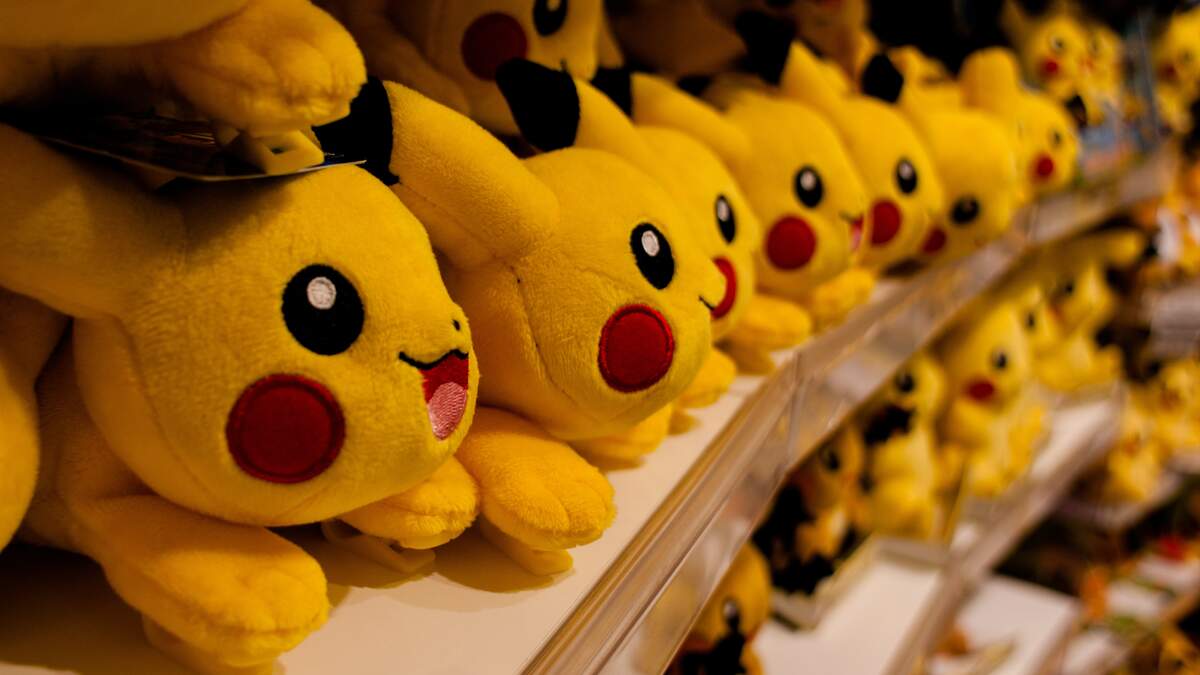

Pokémon Day
Observed
annually on February 27th (since 2016)
Dates
Founded by
Pokémon in February 2016
Hashtags
Sources
https://bulbapedia.bulbagarden.net/wiki/History_of_Pok%C3%A9mon
https://bulbapedia.bulbagarden.net/wiki/Pok%C3%A9mon_Day
https://web.archive.org/web/20160225050046/http://www.pokemon20.com/en-us/news.html
https://web.archive.org/web/20170103190807/http://www.pokemon20.com/en-us/news.html#pokemon-day-is-this-weekend
https://www.standard.co.uk/tech/gaming/pokemon-day-2020-red-green-game-anniversary-a4373106.html
February 27, 2016, marked the 20th anniversary of the release of the first Pokémon video games, Pocket Monsters: Red and Pocket Monsters: Green. Debuting in Japan on February 27, 1996, they were later released elsewhere in the world as Pokémon Red Version and Pokémon Blue Version. In 2016, for the occasion of the 20th anniversary, the first Pokémon Day took place. A special event was held at Nintendo NY in New York City, and a Pokémon pop-up shop was opened at JapanLA in Los Angeles. Events and giveaways took place at other stores, such as Toys "R" Us and GameStop. Events were also held in other countries, such as Brazil and South Korea, and Pokémon hosted a video event on Twitch on the day.
To mark the occasion, Pokémon Blue, Pokémon Red, and Pokémon Yellow were released for Nintendo 3DS. In addition, Pokémon Red and Pokémon Blue were released in special New Nintendo 3DS anniversary bundles in the United States, and Nintendo 2DS bundles of the games were released in Europe, Australia, and Japan. A few other releases took place around the world on the day. In the following years, Pokémon Day has continued to be celebrated, with events and the release of new video games.
Satoshi Tajiri is the creator of Pokémon. Prior to creating it, he formed Game Freak and a design studio called Creatures, with the help of others, including Ken Sugimori. There were a few influences that led Tajiri to create Pokémon. While growing up in suburban Tokyo, he had loved catching insects and tadpoles near his home. This became his foremost inspiration for the game. Tajiri was further influenced by Ultraseven, a fantasy television show where the protagonist had small capsules that contained giant monsters that helped him fight. Tajiri was also influenced by the Game Boy when the image of insects traveling on the Game Boy Link Cable came to his mind. With these influences, Tajiri set off to create a new video game, which he originally called Capsule Monsters. After a few failed attempts in pitching it to Nintendo, it was pitched by Tajiri's friend Shigeru Miyamoto, and Nintendo agreed to fund it. Development lasted six years and the name was changed to Pocket Monsters (Pokémon).
The first games, released in Japan on February 26, 1996, as Pocket Monsters: Red and Pocket Monsters: Green, included 151 creatures that could be caught, trained, and traded. Players aimed to become Pokémon Masters. Since the first releases, Pokémon has adhered to the custom of releasing a "generation" of games and following them with movies and anime series, sets of the Pokémon Trading Card Game, manga (graphic novels), and spin-offs or sequels to the games. Pocket Monsters: Blue was released shortly after the first games, and with them, made up the Generation I Pokémon games.
The first Pokémon Trading Card Game, which included 102 cards, was released in Japan in October 1996. The first anime series, starring the characters Ash Ketchum and Pikachu, premiered in Japan in April 1997, and the first Pokémon movie, Pokémon: The First Movie - Mewtwo Strikes Back, premiered in Japan in 1998. The first manga, published in 1997, were Pokémon Adventures and Pokémon: The Electric Tale of Pikachu. Pokémon spread beyond Japan. Pokémon Red Version and Pokémon Blue Version were released in North America in 1998, as was the anime. The Pokémon Trading Card Game was introduced to America in 1999, and the first movie debuted there the same year. Pokémon Yellow Version, based on the anime, was released in Japan in 1998, and in North America and Europe in 1999.
Pokémon Gold Version and Pokémon Silver Version were released for the Game Boy Color in Japan in 1999, and were released in North America the following year. These games are known as Generation II and included 100 new Pokémon characters. An anime based on them followed after, as did three more anime movies, new trading cards, and manga. Pokémon Crystal Version was then released as the third game of Generation II.
New Pokémon characters came about in 2001 and 2002, ushering in Generation III. Pokémon Ruby Version and Pokémon Sapphire Version were released for Game Boy Advance in Japan in November 2002, and included 135 new Pokémon characters. They were released in North America in 2003 with new features. They spawned a new anime series, two new movies, more manga, a new trading card series, and various spin-off games. In 2004, Pokémon Red Version and Pokémon Green Version were remade as Pokémon FireRed Version and Pokémon LeafGreen Version. The old games were modernized to Generation III standards, and other improvements like wireless connectivity were added. The third game of Generation III, Pokémon Emerald Version, was released in Japan in September 2004 and North America in May 2005.
The seventh, eighth, and ninth Pokémon movies featured and introduced new Pokémon characters from Generation IV. The characters then appeared in two new games, Pokémon Diamond Version and Pokémon Pearl Version, released in Japan in September 2006 and in North America in April 2007. The games had 107 new Pokémon, a new land called Sinnoh, and many other changes. A new anime, Pokémon the Series: Diamond and Pearl, three movies that formed a trilogy, and Generation IV manga were released. Sequel games and more anime followed them. Pokémon Platinum Version, the third game of Generation IV, was released in Japan in September 2008 and in North America in March 2009. The Generation II games Pokémon Gold Version and Pokémon Silver Version were rereleased with improvements as Pokémon HeartGold Version and Pokémon SoulSilver Version, in Japan in September 2009 and in the United States in March 2010.
Generation V games Pokémon Black Version and Pokémon White Version, which had 156 new Pokémon characters, were released in Japan in September 2010 and elsewhere in March 2011. New anime, movies, and manga followed their release, as did sequels to the games: Pokémon Black Version 2 and Pokémon White Version 2. Generation VI games Pokémon X and Pokémon Y debuted in October 2013, being released on Nintendo 3DS. From this came the anime Pokémon the Series: XY. The Generation III games Pokémon Ruby Version and Pokémon Sapphire Version were updated and released as Pokémon Omega Ruby and Pokémon Alpha Sapphire in November 2014.
Generation VII was announced during the 20th-anniversary celebration of Pokémon, which was the first Pokémon Day. Generation VII games Pokémon Sun and Pokémon Moon were released the following November. The anime Pokémon the Series: Sun & Moon came soon after. Generation VIII games Pokémon Sword and Pokémon Shield were released in November 2019. As more generations of Pokémon games continue to be made, the legacy of Pokémon grows. We celebrate this legacy each February 27 with Pokémon Day.
How to Observe Pokémon Day
There are many ways you could celebrate the day:
- Play one or more of the many Pokémon video games.
- Read Pokémon manga.
- Watch some Pokémon anime episodes or movies.
- Play the Pokémon Trading Card Game. There even is an online version of the game.
- Check to see if events related to the day are taking place at a game store near you. GameStop has been involved in the day in the past, as has Nintendo NY.
- Watch for events related to the day on the Pokémon Twitch channel.
- Visit the Pokémon website for news, information about upcoming events, and other information related to Pokémon.





















